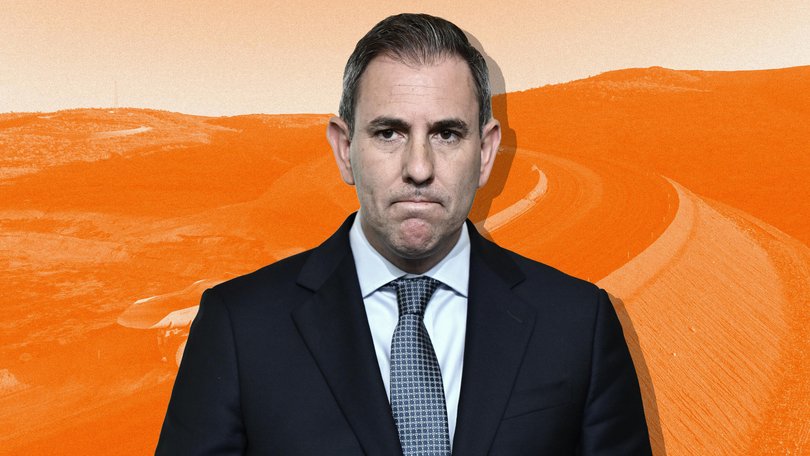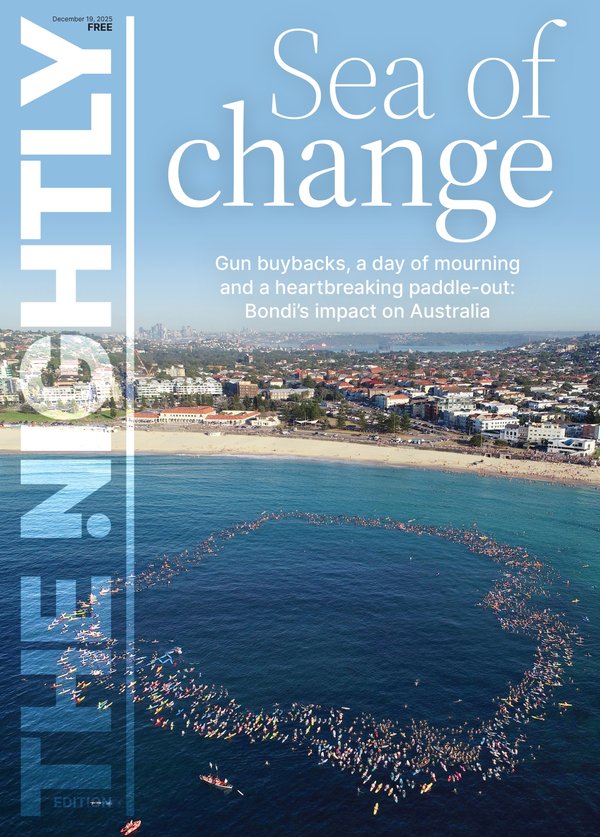Budget deficit triples in four months as tax revenue surges but government spending keeps rising

The Budget deficit tripled in four months despite a taxation surge, driven by higher spending under Treasurer Jim Chalmers.
From the end of last financial year to October 31, the federal government ran up a $32.9 billion Budget deficit, Department of Finance figures on Friday showed, which is almost triple the $10 billion deficit in 2024-25.
“The whole level of government spending is too high,” AMP chief economist Shane Oliver told The Nightly.
Sign up to The Nightly's newsletters.
Get the first look at the digital newspaper, curated daily stories and breaking headlines delivered to your inbox.
By continuing you agree to our Terms and Privacy Policy.“It’s running at record levels and it’s been too rapid.”
The government raised $211.6 billion from taxes during the first four months of this financial year, up from $207 billion forecast in the March Budget.
The government is spending heavily on the NDIS, aged care and defence, and the government has shown little interest in slashing spending like previous Labor and Coalition governments.
Spending as a proportion of the economy is forecast to hit 27 per cent this financial year, which would be the highest since 1986 outside of the pandemic. Last year the figure was 26.2 per cent.
Higher interest rates, compared with when Labor came to power in May 2022, have increased the cost of servicing government debt, which is heading towards $1 trillion.
Labor’s plan to cut public service spending by $5.6 billion is unlikely to bring the Budget back to surplus.
Steel trap
The March Budget forecast that the iron ore price would fall to $US60 ($92) a tonne but the mineral has held above $US100 a tonne, thanks to China’s need for the Western Australian commodity to make steel.
Economist Chris Richardson said the strong iron ore price had enabled the government to claim it was a good economic manager.
“Official forecasts always have commodity prices such as iron ore dropping like a stone,” he said on X.
“When that doesn’t happen, it allows the Treasurer to announce that good management means we’ve ‘done better than expected’.”
The Australian share market reached new record highs last month, generating more capital gains taxes.
“The other factor is share markets. AI enthusiasm has sent them higher than Nimbin on a sunny Sunday,” Mr Richardson said.
“That boosts the Budget via superannuation taxes and capital gains taxes — both of which are riding high.”
The fiscal balance, showing what the government has to borrow to cover its activities, was $30.4 billion from July 1 to October 31. Stronger tax revenue meant it was lower than the Budget forecast of $36.2 billion.
Labor’s election promise to slash student debt by 20 per cent, at a cost of $16 billion, came into effect on August 2. The Australian Taxation Office has this month begun processing that debt reduction.
The Budget projected a $42.1 billion deficit for 2025-26. Federal governments traditionally run up bigger Budget deficits early in the financial year as the government pays out tax refunds from July until returns are due by October 31.
The deficit was based on the gap between government receipts of $735.4 billion, covering tax collection and dividends from government investments, and government payments of $777.5 billion.
During the first four months of 2025-26, the $32.9 billion deficit reflected the difference between $260 billion in payments and the $227.1 billion in receipts.
The Budget forecast the jobless rate remaining at 4.25 per cent in 2025-26. The unemployment rate of 4.3 per cent for October was consistent with that prediction.
Federal government payments are expected to total $777.5 billion by the end of the financial year. The $260 billion spent during the first four months of 2025-26 is higher than the $258.6 billion predicted in the Budget.
Unlike previous Budgets, Dr Oliver said the government would no longer be able to rely on upside surprises like stronger-than-expected commodity prices to report smaller deficits from stronger company tax revenue, as Treasury did for the last financial year.
“The upside surprise on iron ore and commodity prices, coal and gas included, is not as great as it has been in the previous years,” he said.
“Government spending has been ramping up on pressures Jim Chalmers often refers to,” he said. “We’ve got these underlying pressures on the Budget.”
“They don’t want to [cut spending] but now’s the time to do it. The next election is two-and-a-half years away.”
Labour pains
Higher government spending potentially adds to inflation if the public sector is competing with private enterprise for available labour and materials.
University of New South Wales economics professor Richard Holden said the government was also contributing to Australia’s poor productivity by making industrial relations too complex.
“They’ve just made it harder for business to adapt to changing circumstances and be competitive,” he told The Nightly.
“It’s really increased the compliance burden a great deal and I don’t think that gets talked about enough.”
Westpac chief economist Luci Ellis said there was little evidence of a wage-price spiral, with pay levels barely outpacing inflation.
“In terms of people’s take-home pay, if they’re in the same job as they were last year, they’re not necessarily keeping up with it,” she said.

